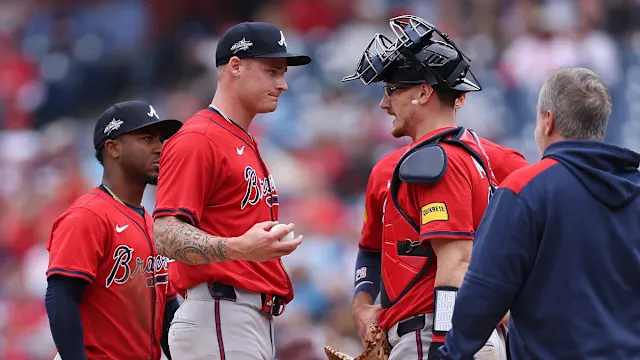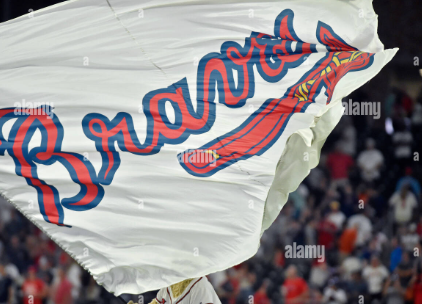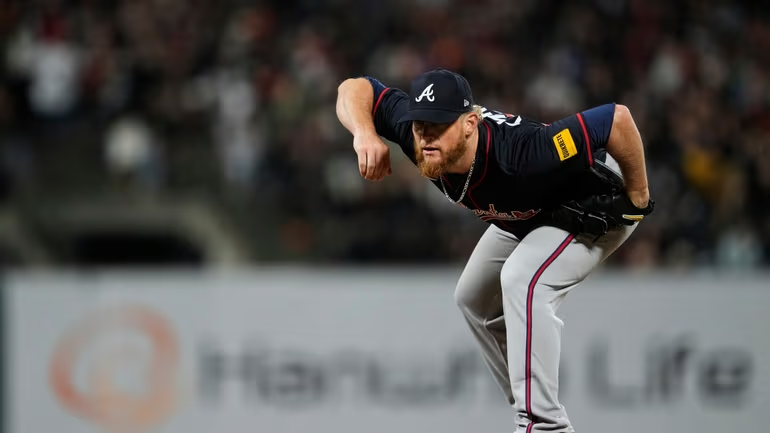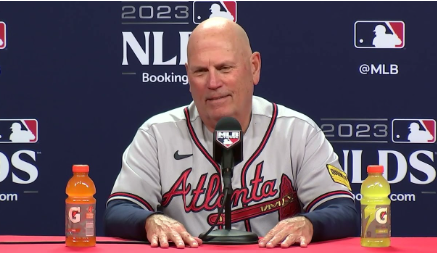The Atlanta Braves just can’t seem to catch a break.
Rookie right-hander AJ Smith-Shawver underwent Tommy John surgery on Monday, bringing a sudden end to what had been a promising 2025 season. The loss is another major blow to Atlanta’s already depleted pitching rotation—and its effects could ripple into 2026 and beyond.

The surgery, performed by Dr. Keith Meister in Arlington, Texas, confirmed a full reconstruction of Smith-Shawver’s ulnar collateral ligament. The 22-year-old now faces a lengthy recovery, with rehab expected to keep him out for 12 to 14 months.
“He’s got a bright future,” Braves manager Brian Snitker told reporters. “This is just a small bump in the road. He’s still very young, and I believe he’s going to have a great career.”
That may be the case long-term, but for now, his absence puts the Braves in a tough spot. The team recently welcomed back ace Spencer Strider from his own UCL issue, is still waiting for Reynaldo López to recover from shoulder surgery, and now has to press forward without one of its most promising young arms—at a critical point in the NL playoff race.
Atlanta’s Pitching Depth Is Wearing Thin

In his first nine starts, AJ Smith-Shawver posted a 3.86 ERA and flashed the potential of a future ace. Over his first seven appearances, he dominated with a 2.33 ERA, but things fell apart in outings against the Nationals and Phillies. His start against Philadelphia ended after just 2 2/3 innings, when he left the game after feeling a “pop” in his elbow—an ominous sign that led to his eventual Tommy John diagnosis.
Now, the Braves rotation is made up of Chris Sale, an inconsistent Spencer Strider, rookie Spencer Schwellenbach, Grant Holmes, and Bryce Elder. It’s a group short on star power and depth—outside of Sale, there’s little room for error.
The concerns only deepen when looking at Triple-A. The Braves’ depth chart doesn’t offer many encouraging alternatives. Davis Daniel and Nathan Wiles are capable but unlikely to be reliable postseason options. Former first-round pick Hurston Waldrep has struggled badly in Gwinnett. Other non-roster pitchers like Ian Anderson, Zach Thompson, and José Suarez have failed to impress, and Suarez is currently injured.
The bottom line: Atlanta is running out of pitching options—and fast. Whether they become aggressive buyers at the trade deadline or begin shifting toward a sell-off will likely depend on their performance in the coming weeks. Monday’s win over the Brewers broke a seven-game losing streak, but if the skid resumes, the Braves may have no choice but to start looking toward the future.
Long-Term Ramifications for Smith-Shawver and the Braves
For AJ Smith-Shawver, the timing of this injury couldn’t have been worse. After getting limited action in 2023 and 2024, he entered 2025 still a rookie—and was making the most of it. Over his first 38 2/3 innings, he posted a stellar 2.33 ERA, a 24.8% strikeout rate, and held opponents to a .209 batting average, showing clear signs of a breakout.
Now, instead of building on that momentum, he’ll be sidelined for an extended stretch—still earning MLB service time and salary while rehabbing, which brings him closer to arbitration and free agency without throwing another pitch. On the bright side for the Braves, because Smith-Shawver spent only 16 days in the minors this season, he retains his final minor league option—something that could prove valuable once he’s ready to return.
In a best-case scenario, Smith-Shawver could rejoin the team by mid-2026. Worst case? The Braves may not see a full season from him again until 2027.
Regardless of the timeline, this is a gut punch for a Braves team that entered the season with championship aspirations but now finds itself in flux.
If this turns out to be a lost season, Smith-Shawver’s injury could be remembered as the moment things truly began to unravel.




